How to Write an Official E-mail – Writing official e-mails can be unpleasant and stiff. That is why sticking to a set structure is beneficial.
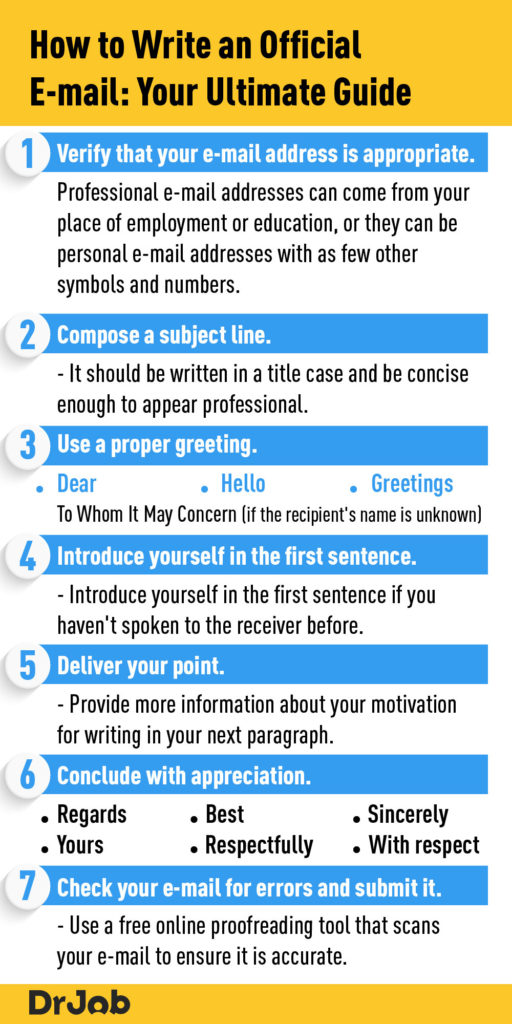
Read also, How Can a Freelancer Use Email Marketing to Win New Clients in 2022?|Drjobpro.com
Dr. Job is here to show you how to write an official e-mail.
What is an official e-mail?

Formal e-mails are the default option for business settings and communications, ensuring that employees' interactions accurately represent their firm.
What distinguishes an excellent formal e-mail?

Its structure differs as well because it must adhere to official writing conventions.
You read that correctly:
No comma splices, sentence fragments, or colloquial language.The format and delivery of formal e-mails are similarly predetermined.
The greetings are conventional, with more formal punctuation, and they are also shorter.
So, how often are these e-mails used?
Whether you're seeking to secure a contract with a new client, responding to a complaint, or getting in touch with a manager or CEO, you can utilize professional e-mails in various contexts.
Why are formal e-mails crucial?

When someone receives an e-mail from an unknown sender,
The formatting verifies that the message is essential and was written by someone who genuinely cares.A formal e-mail's warm tone encourages two parties to have a helpful conversation in which they happily show courtesy to one another.
A job candidate,
For instance, who are inquiring about a position with a company benefits from demonstrating their expert communication skills by sending an official e-mail.
What distinguishes official from informal e-mails?

To better grasp the differences between them and the circumstances in which they are suitable, consider the following significant comparisons:
Audiences
Although some businesses are adopting more straightforward e-mailing procedures, most people who exchange e-mails do so with friends, family, and colleagues.
When interacting with audiences relevant to your work,
Such as coworkers, clients, and representatives of other firms, formal e-mails are appropriate.When talking with people whose respect you want to earn, such as government officials, professors, or other public figures, use professional e-mails.
Formatting
Generally, formal e-mails have an opening paragraph, a body, and a conclusion.This structure minimizes the possibility of misunderstandings and aids recipients in rapidly understanding the importance of an e-mail.
While some professional e-mails may need very long body paragraphs, the majority may achieve their objectives in one or two sections.
However,
The remainder of their layout is up to individual taste and the sender's objectives.Informal e-mails frequently adhere to accepted e-mail protocols, such as using the recipient's name when writing to them and signing off with the sender.
Spelling and grammar
Grammar rules are not necessary for informal communications. Misspellings and improper grammar should be avoided in formal communications.
Official e-mails
Represent your communication abilities and writing style in a work-related or official message. An Official e-mail's first impression frequently directly impacts the response it garners for the sender.
Content
Usually, business e-mails are instructive.They occasionally include polite requests, but they mainly offer the recipient a few essential facts they should be aware of and may wish to act upon.
A sales representative can introduce themselves to a potential customer and explain what they sell.
At the same time,
Employees might send their manager a professional e-mail with an update on a project.
Informal e-mails
Frequently have entertaining or personal content. Friends may talk about recent happenings in their lives, or someone may send family members pictures from a recent vacation.
How to format an official e-mail

1. Verify that your e-mail address is appropriate.
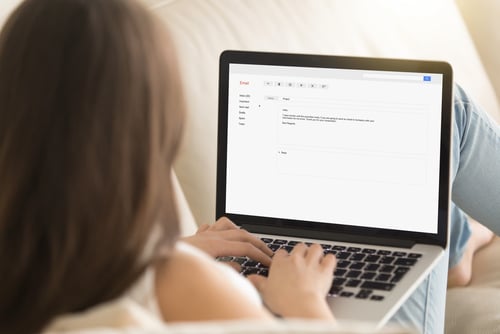
Professional e-mail addresses can come from your place of employment or education,
Or,r they can be personal email addresses with a few other symbols and numbers that contain parts of your name.The recipient can be hesitant to open e-mails from odd or unprofessional senders, especially if they don't know you.
2. Compose a subject line.
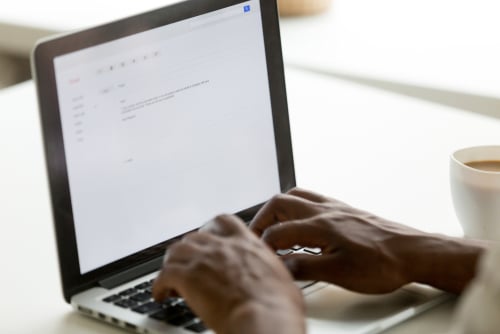
It should be written in a title case and be concise enough to appear professional. If doing so will help the receiver classify or respond to the e-mail, you can put your name in the subject line.
3. Use a proper greeting.

- Dear
- Hello
- Greetings
- To Whom It May Concern (if the recipient's name is unknown)
4. Identify yourself

A professor might want to know whether you are a student or faculty member,
And a business owner might want to see whether you are a potential customer or an employee of another company.Finish your introduction with a sentence that summarizes your purpose for writing.
5. Deliver your point clearly

The ideal length for this part is one or two paragraphs.
6. Conclude with appreciation
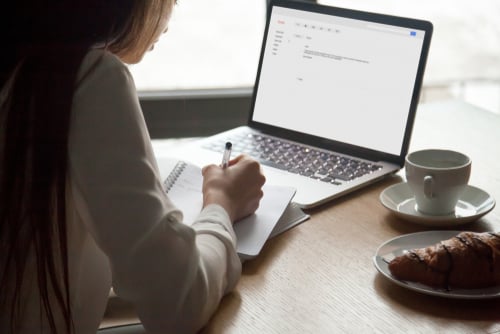
It ends by mentioning the following exchange you hope to have with the receiver.
For instance,
You might want to wait for a response from them, or you might like to schedule a face-to-face encounter.Use a proper closure before signing your name and, if necessary, include your professional contact details. Here are some appropriate formal closings:
- Regards
- Best
- Sincerely
- Yours
- Respectfully
- With respect
7. Check your e-mail for errors and submit it.

Use a free online proofreading tool that scans your e-mail to ensure it is accurate.
Official e-mail format
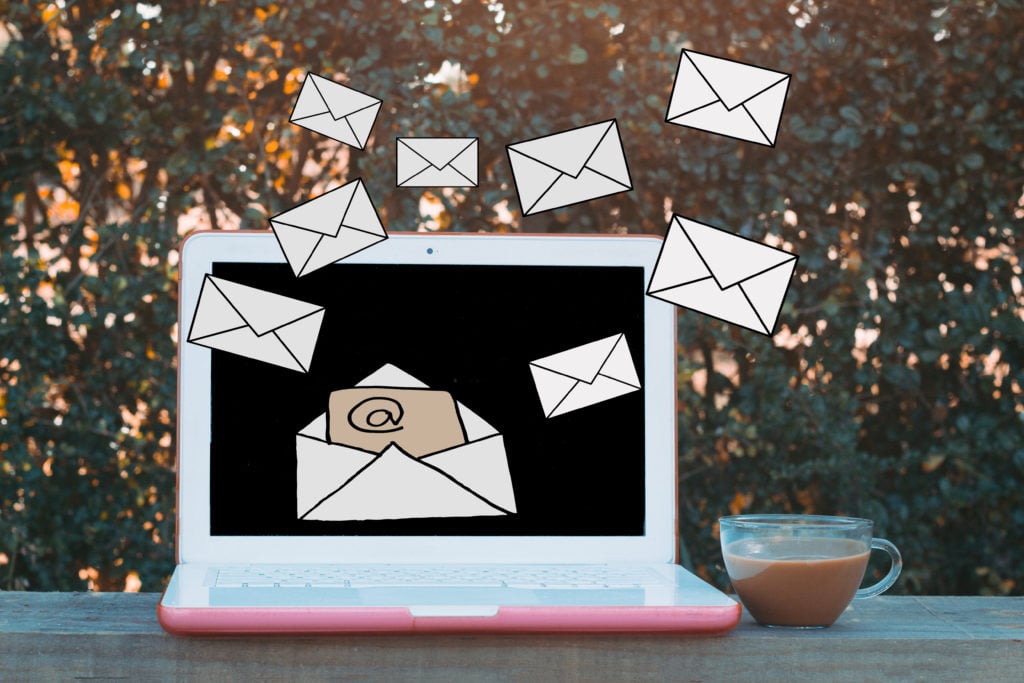
Dear [Name of Recipient],
My name is [Your Name ], and I am [discuss the relationship to recipient or significance]. To [insert reason for contacting recipient], I am writing.
[Show some background information about yourself and describe your goals]. [Add any other pertinent information while keeping your message concise.]
I appreciate your time. I look forward to speaking/hearing from/meeting you soon.
[Concluding Formally], [Your name]
[Contact information for professionals]








 2023-05-05
2023-05-05
 2023-04-18
2023-04-18
 2023-04-10
2023-04-10
 2023-04-03
2023-04-03
 2023-03-29
2023-03-29